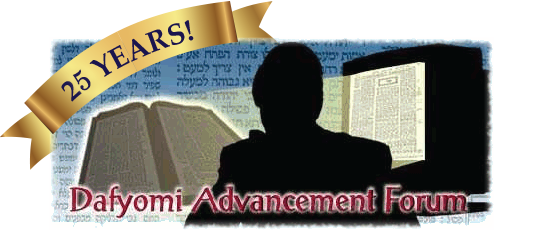Who actually took the birds?
Sifra: The Kohen issued the command and somebody else took the birds.
?Sh?tei Tziparim Chayos. ?What is the definition of ?Tziparim??
Ramban and R. Bachye: ?Tziparim? always refers to Tahor species of birds 1 ? except when it discusses birds that are forbidden 2
Ramban and R. Bachye: As the Torah writes in Devarim 14:11 ?Kol Tzipor Tahor Tocheilu?.
Ramban and R. Bachye: Such as Tzipor Ir ha?Nidachas and a bird thawt killed a human-being.
Why does the Torah write "Velakach la'Mitaher" and not 'Velakach lo'?
Sifra: To teach us that if the birds are taken on behalf of a man, they may be used for a woman ? for a person, they may be used for a house ? as long as they are used for someone or something that is stricken with Tzara'as.
Bearing in mind that "Tziporim" (plural) implies two, why does the Torah add the word "Sh'tei"?
What are the words "Chayos" and "Tehoros" coming to preclude?
Rashi (citing Chulin, 140a): "Chayos" precludes T'reifos; "Tehoros", Tamei species of birds. 1
Ramban #1 (citing the Sifra: "Chayos" comes to preclude birds that have already been Shechted, and "Tehoros", both Tamei species and T'reifos .
Ramban #2 (citing Chulin, 139b): "Tzipor" implies Tahor species exclusively. 2 However, the Taharah of a Metzora is confined to birds that dwell free 3 (Tziporei D'ror).
Moshav Zekenim (citing R. Eliezer of Garmaiza): "Chayos" implies zealous, like " ? ki Chayos Heinah" (Sh?mos 1:19). 4
See Torah Temimah note 23. See also Ramban's objections to this explanation.
He writes this after citing the Ibn Ezra, who, (based on Pesukim in Tehilim and in No'ach and Lech-L'cha), explains that it incorporates all types of birds, and after concluding (based on Pesukim in Shoftim, Ki Seitzei and elsewhere) that it pertains to small birds that sing in the morning ('Tzafra' is the Arama'ic word for morning).
Irrespective of whether they actually twitter or not (Refer to 11:14:2:1), although he concludes that that dwelling free is crucial to the Mitzvah and that all Tziprei D'ror twitter. See Ramban (DH 've'ha'Nir'eh' and onwards) who elaborates further in great detail.
Moshav Zekenim ibid.: It is not needed to preclude birds that have aleady been Shechted, seeing as one of them must now be Shechted.
What are the implications of the dual term "Eitz Erez"?
Sifra: "Eitz" teaches us that he does not need to bring a complete sapling, and "Erez", that it must be specifically the twig of a cedar-tree. 1
See Torah Temimah, note 24.
Why does the need to write both "Tola'as" (the dye of a red worm) and "Shani", which also implies red?
What is the definition of "Sh'ni Tola'as"?
Refer to Sh'mos, 25:4:0.1:1 &2 and notes, and to 14:4:1.2:1.
What is the definition of "Eizov"?
Nega'im, 14:15: It means a S'tam hyssop, to preclude those with a secondary name ? such as 'Eizov Kuchlis, 1 Eizov Romi, Eizov Midbari',
See Torah Temimah, note 31.
What is the significance of the birds, the cedar-wood the crimson thread and the hyssop-branch?
Rashi and Ramban: He brings birds ? because, since the primary sin for which Tzara'as atones is Lashon ha'Ra (baseless twittering), the Kaparah requires birds that twitter; 1 Cedar-wood ? because, since the root of Lashon ha'Ra is pride, he must take a twig from a tall cedar; 2 and consequently, in order to remind him to make himself small, A crimson thread 3 and a hyssop-branch. 4
Rosh: He brings birds due to "k'Tzipor Nodedes Min Kinah Ken Ish Noded mi'Mkomo." This is like a Metzora, who dwelled outside the Machaneh.
Moshav Zekenim, citing Ibn Ezra: We find crimson thread and hyssop also for Taharah of Bayis ha'Menuga and from Tum'as Mes; they are like Pesach Mitzrayim (in which they put blood on the doorpost via hyssop - Sh'mos 12:22).
Moshav Zekenim: If his heart was high and haughty like cedar, and his Aveirah is crimson ('Im Yihyu Chata'eichem ka'Shanim" (Yeshayah 1:18), and his Yetzer Tov is lowly like hyssop, all will be atoned for in the merit of killing his Yetzer ha'Ra.
Moshav Zekenim (57, also in Otzar Midrashim Pinchas ben Ya'ir with changes): Tzara'as comes for three matters - for envy of folly, like Miriam 5 ; for lust of wealth, like Gechazi; and for haughtiness, like Uziyah. Therefore, his clothes are torn and his hair grows long, against wealth; he calls 'Tamei, Tamei', against desire for folly; he dwells alone because he raised himself; he dwells outside all three camps. Therefore, he brings three [matters for] Kaparah - cedar, crimson thread and hyssop.
Moshav Zekenim: All slander is said quietly and covertly, and the words are changed so [the one slandered] will not understand if he hears. Therefore, his Kaparah and cure is through birds that twitter and do not have nice speech. Also refer to 14:4:1:3***.
Which is the tallest tree (Ramban).
Or like a worm (which also translates as 'Tola'as').
Which is the smallest of plants (Ramban).
This is difficult. Miryam spoke, for she thought that Moshe improperly divorced his wife! Perhaps 'Kin'as ha'Hevel' means a zealousness of folly (it was proper to question Moshe's act, but it was folly to speak to Aharon, and not Moshe himself). Or, it is a desire for folly, i.e. to speak unnecessary words; Mashehu of this was mixed with her pure intent (to help Tziporah), and Hashem is ultra-exacting with great Tzadikim. (PF)
QUESTIONS ON RASHI
Rashi writes that "Chayos" comes to exclude T'reifos. We need it to exclude birds missing a limb!
Moshav Zekenim citing Ri: 'Chayos' excludes both of these. 1
Moshav Zekenim: Regarding Noach, we need two Pasuk s - "mi'Kol ha'Chai" to teach that their extremal limbs are alive, and "Lehachayos Itach" to exclude Tereifos (Zevachim 116a)! There, to repopulate the world, we would have thought that there is concern only that they are not Tereifos, if not for a second Pasuk .




